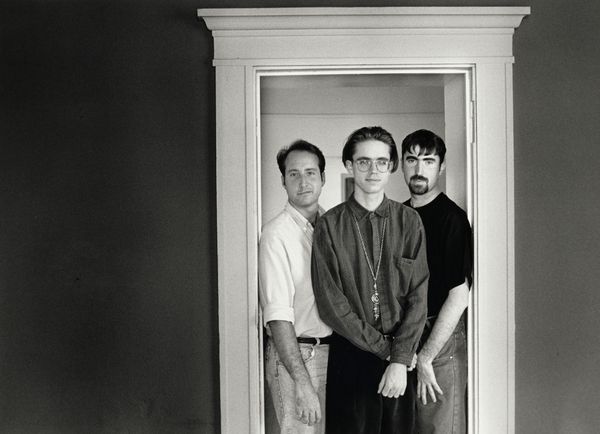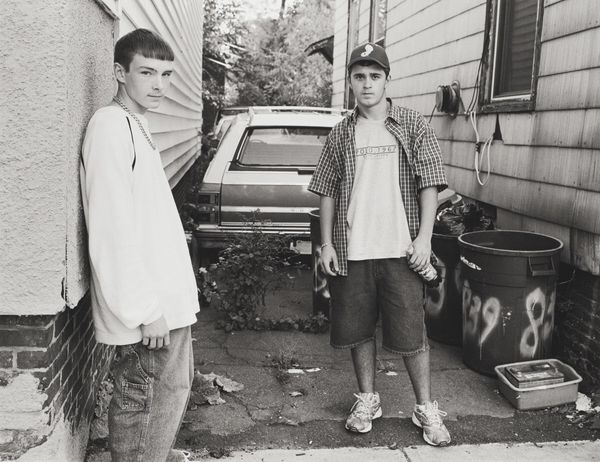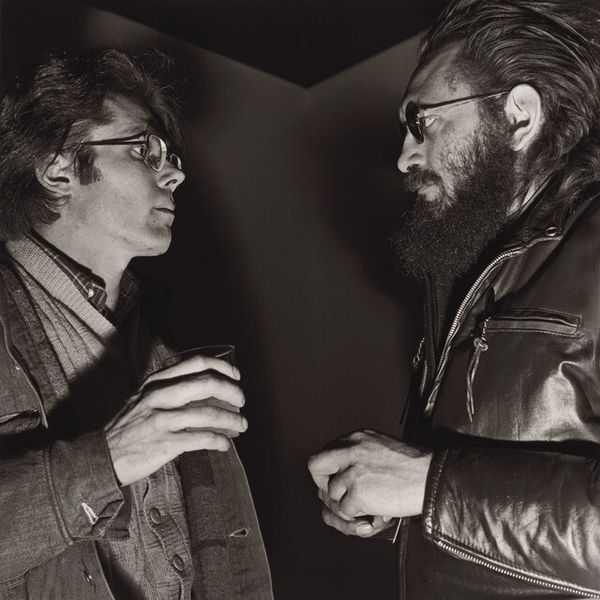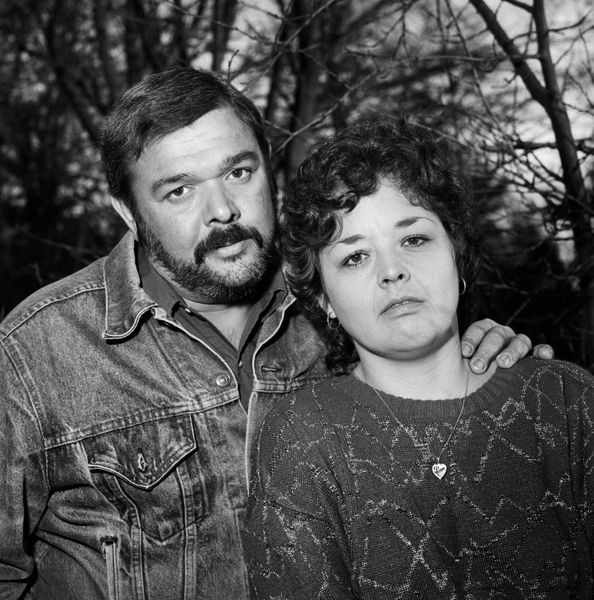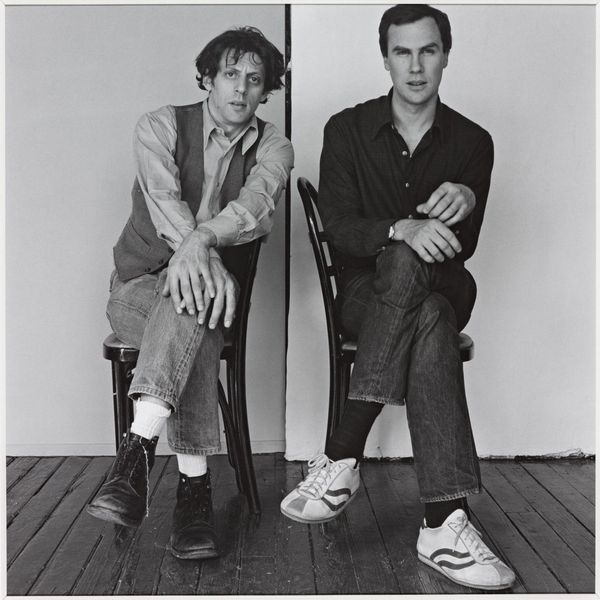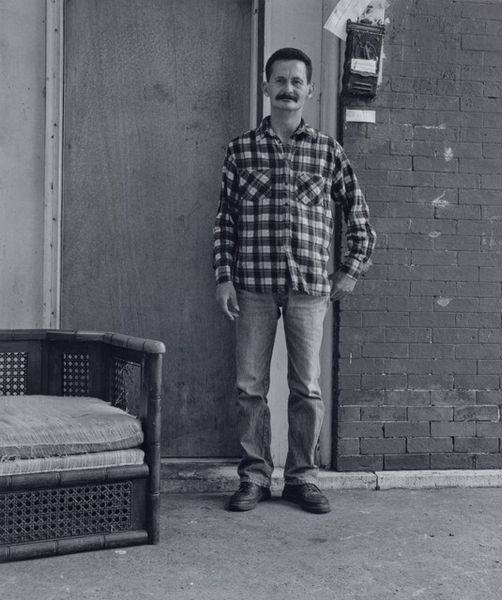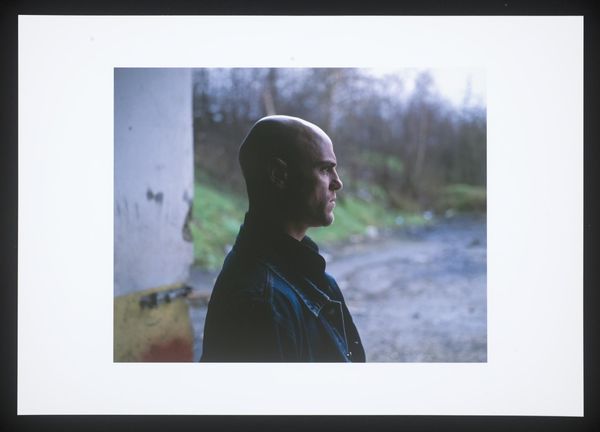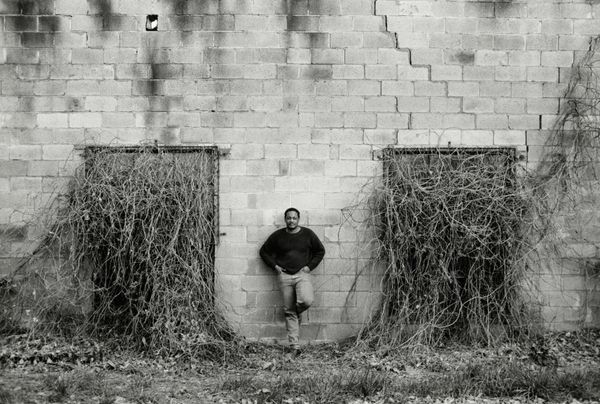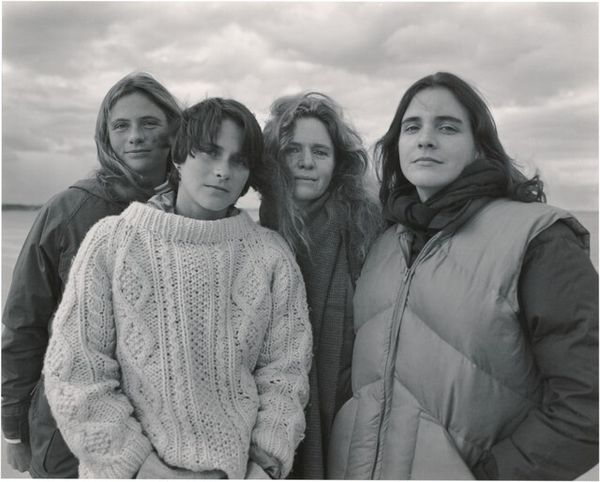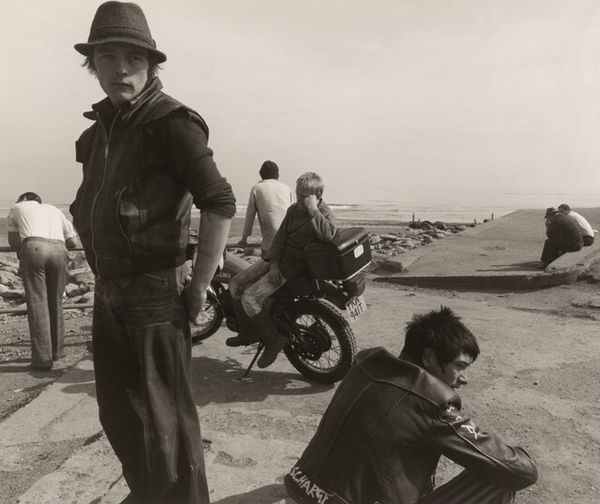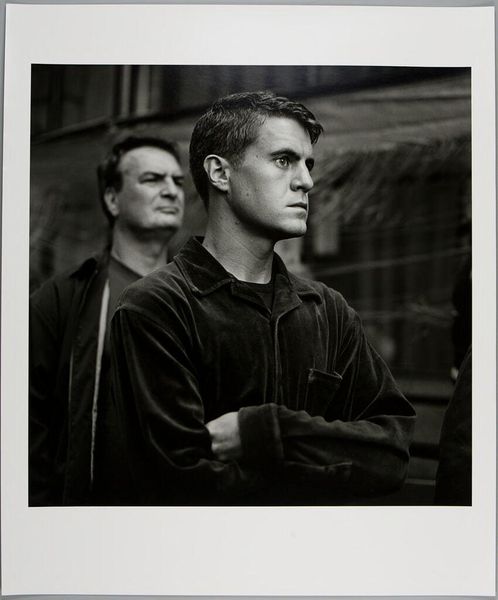
#
meet
#
black and white photography
#
outdoor photograph
#
outdoor photo
#
black and white format
#
monochrome colours
#
candid portrait
#
black and white
#
monochrome photography
#
outdoor activity
Dimensions: image: 80.01 × 80.01 cm (31 1/2 × 31 1/2 in.) sheet: 108.59 × 101.6 cm (42 3/4 × 40 in.)
Copyright: National Gallery of Art: CC0 1.0
Editor: Rosalind Solomon’s 1987 photograph, "Washington, DC," shows two men sitting casually on the grass. The Washington Monument looms faintly in the background. The black and white format lends the image a timeless quality. I’m struck by their gaze - almost defiant. What symbolic readings can you draw from it? Curator: Indeed, that gaze is powerful. Notice how the Washington Monument, a phallic symbol of national identity and power, is rendered almost insignificant. Consider what that positioning implies when placed behind two men in an era still heavy with the AIDS crisis and societal prejudice. Does the monument serve as a backdrop or something else? Editor: Something else. It almost feels diminished by their presence, overshadowed rather than glorified. Are you suggesting that Solomon is consciously subverting established symbols of authority? Curator: Perhaps. The image plays with layered meanings. The public space, usually associated with civic pride, here becomes a site of quiet assertion. Their relaxed posture is an act of claiming space and normalcy, isn't it? Think of the unspoken narratives, their shared experience versus the dominant narrative projected by the distant monument. It asks us to question who shapes our national iconography. Editor: So the personal becomes overtly political through visual juxtaposition. The Washington Monument loses its intended meaning when filtered through the photographer's and the subjects' lens? Curator: Precisely. It is a potent example of how visual symbols acquire new emotional and cultural significance depending on context and perspective. Editor: I never considered how the power dynamics could shift so dramatically just by changing the background! It’s amazing to think of the image as actively rewriting established visual narratives. Curator: The photograph is an evocative lesson in cultural memory. Remember to ask, “Who is in the frame, who is outside of it, and why does that matter?"
Comments
No comments
Be the first to comment and join the conversation on the ultimate creative platform.
